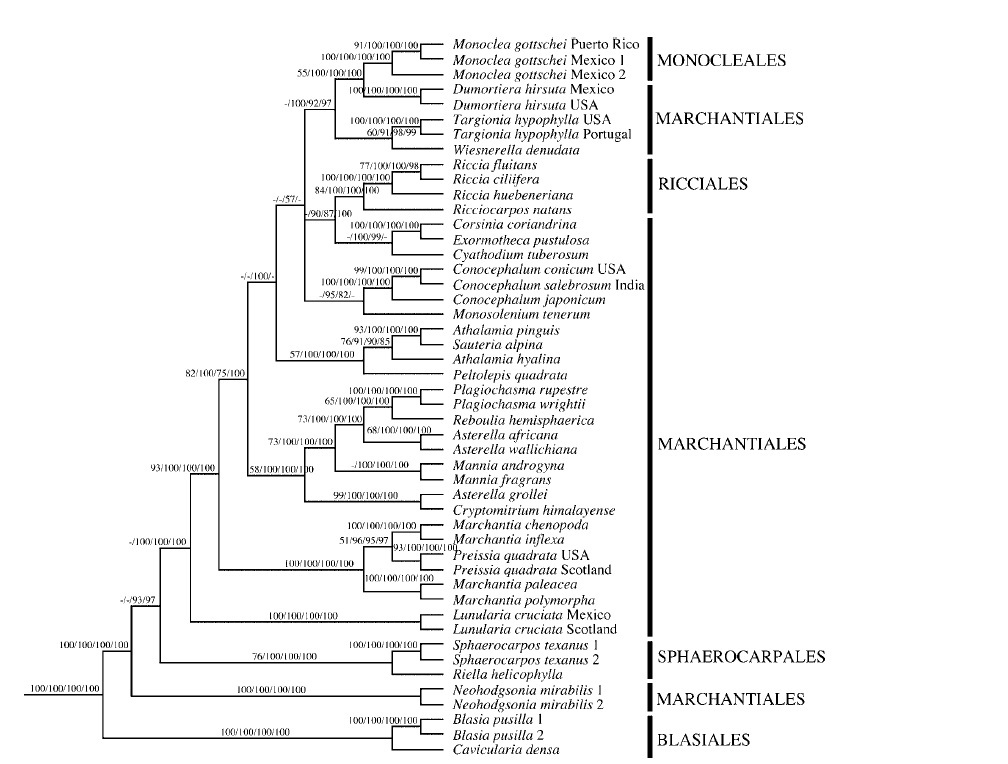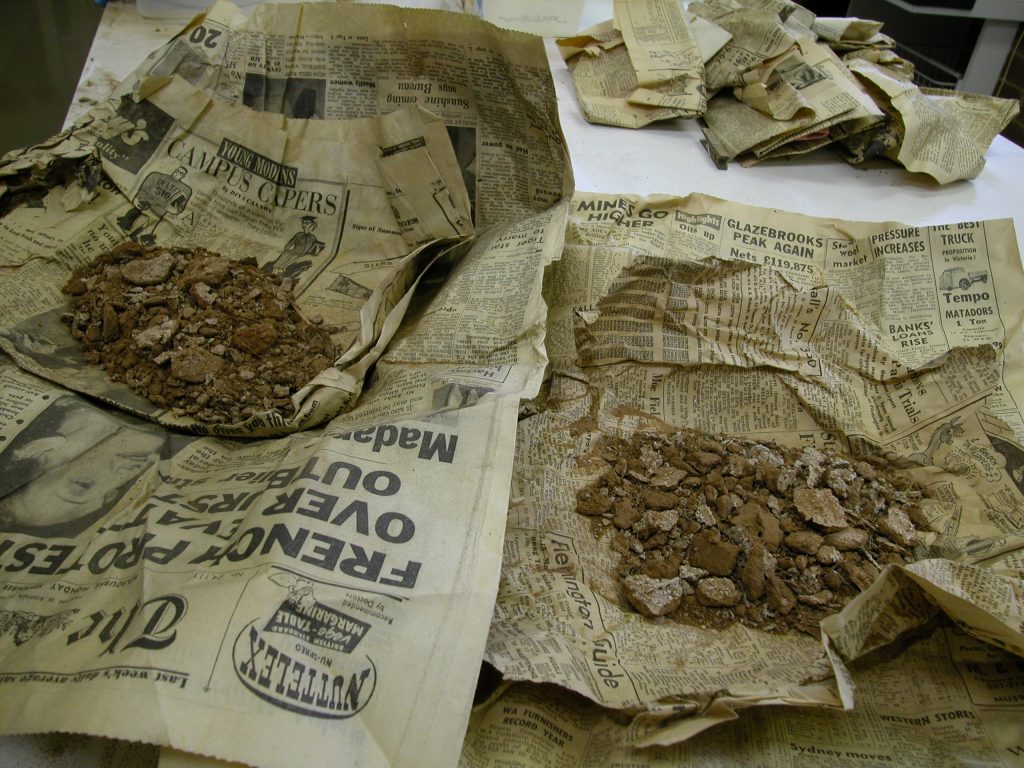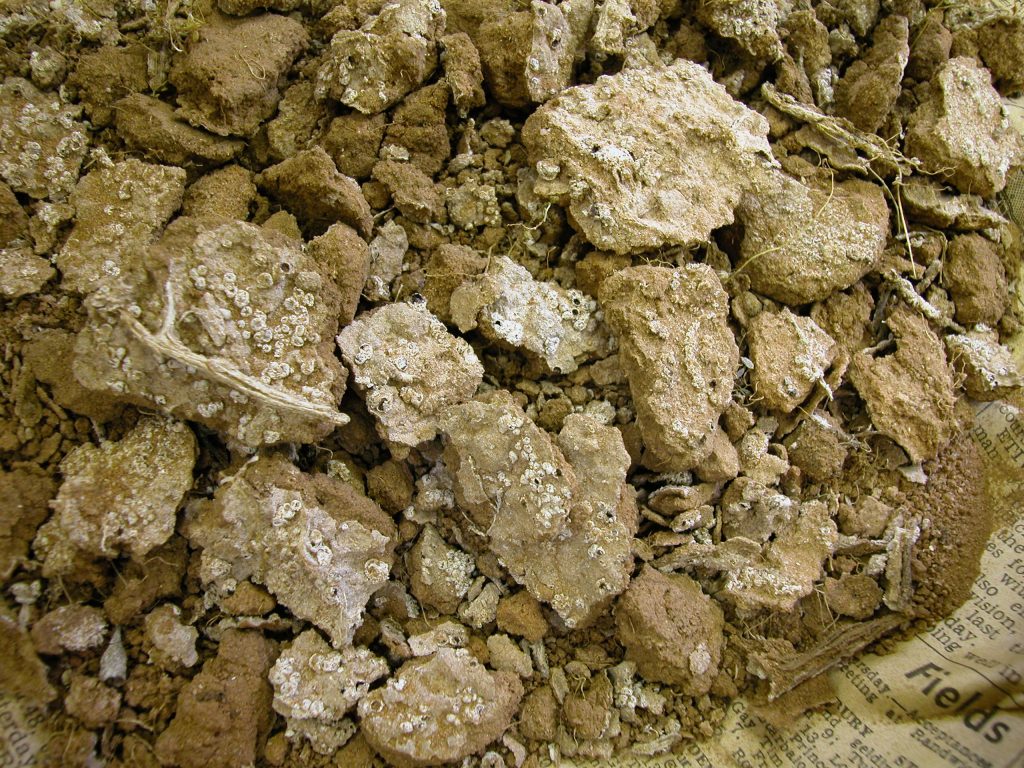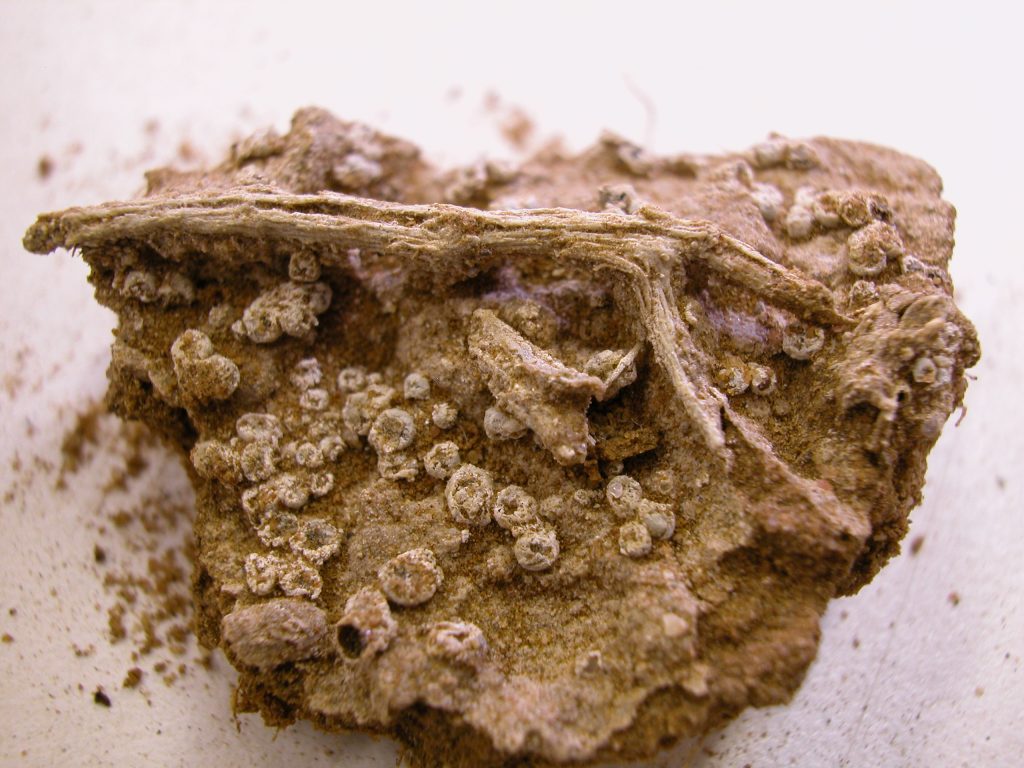At the Royal Botanic Garden Edinburgh we’ve been working on the phylogeny of the complex thalloid liverworts for rather a while now. David Long presented a poster on it in 2004 at the International Botanical Congress in Vienna, with data that were included in a collaborative study published in 2006 (Forrest et al., see below).
However, several genera were not available at that time. For many of these missing genera, the phylogenetic placement was not really controversial – while we had not sampled Bucegia, for example, morphologically we expect it to fit in a lineage with Marchantia and Preissia. Oxymitra, likewise, is expected to fit near Riccia. The placement of Monocarpus, on the other hand, remained controversial; several authors, including Denis Carr (1956) and Sarie Perold (1999) placing it with Sphaerocarpos (Sphaerocarpales), while the most up to date liverwort classification, from Barbara Crandall-Stotler, Ray Stotler and David Long (2009), put it in the Marchantiales.
One of the people that we contacted to try to get hold of Monocarpus material for DNA extraction, back in July 2006, was Chris Cargill, from the Australian National Herbarium, who promised to keep a lookout for us. In January 2008 she sent us an excited email – a few weeks previously she had picked up 15 boxes of bryophytes from Denis Carr and been slowly going through them. They were collections made over 50 years ago, still wrapped in their original newspaper packets, many with quite a lot of loose dirt. Collection details for many had been lost, rendering them as good as useless.
However, when Chris grabbed her first box of 2008 to go through, she found a box within the main box, written on which was “New Victorian localities for Monocarpus“. In her words, it was “absolutely full of shovel loads of Monocarpus, collected by Carr.
Her email was to ask us if we were interested in receiving any of this plant material for DNA work. Our answer was a very resounding yes. Although the age of the material meant we were not sure we would be able to recover amplifiable DNA from it, the quantity of plants in the collection, and the number of large brown spores that were visible, gave us some hope of success.
The plants arrived in Edinburgh, our first actual sighting of the genus, in February 2008. Sadly, by the end of the month the extracted DNA had not amplified in PCR reactions for a wide range of DNA regions, meaning that we remained unable to place the genus in an evolutionary context – although postdoctoral researcher Daniela Schill, then studying Sphaerocarpos here at the Botanics (supported by a Sibbald fellowship), did manage to obtain some new scanning electron micrographs (SEMs) to show the morphology of the plant’s spores.
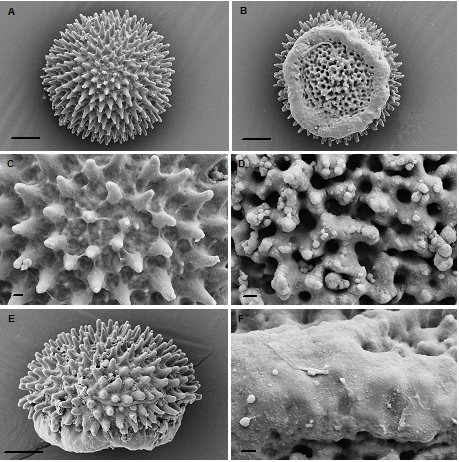
Monocarpus sphaerocarpus spores. D.J.Carr s.n., Australia. A distal view; B proximal view; C fine distal ornamentation; D fine proximal ornamentation at centre; E side view; F fine proximal ornamentation at margin. Scale bars: A, B, E, 10 µm; scale bars: C, D, F, 1 µm. Equatorial diameter of spores between 41.9-51.7 µm. Images taken by Daniela Schill.
On Monocarpus – http://stories.rbge.org.uk/archives/17112
Finding Monocarpus, in the Herbarium – http://stories.rbge.org.uk/archives/17146
Finding Monocarpus, in the field – http://stories.rbge.org.uk/archives/17272
Lost before found: Was there more than one species in Monocarpus? – http://stories.rbge.org.uk/archives/17904

